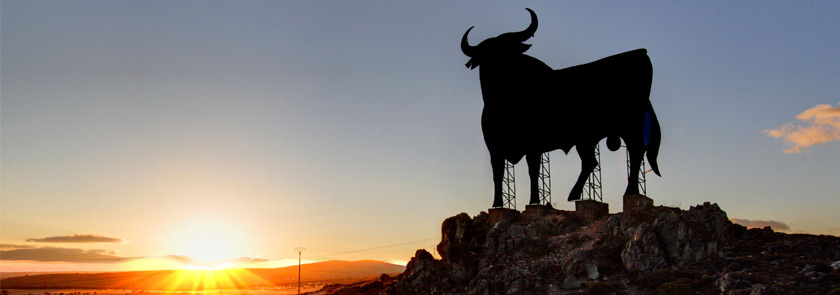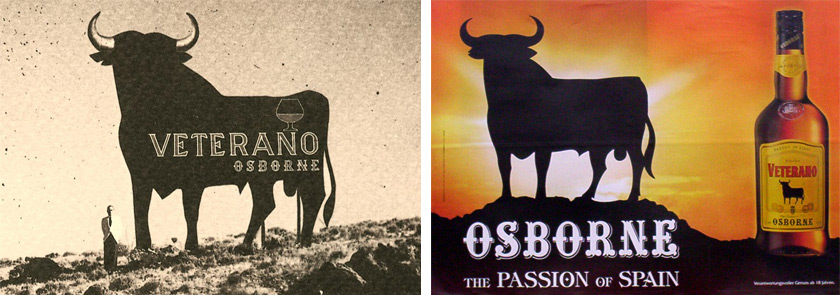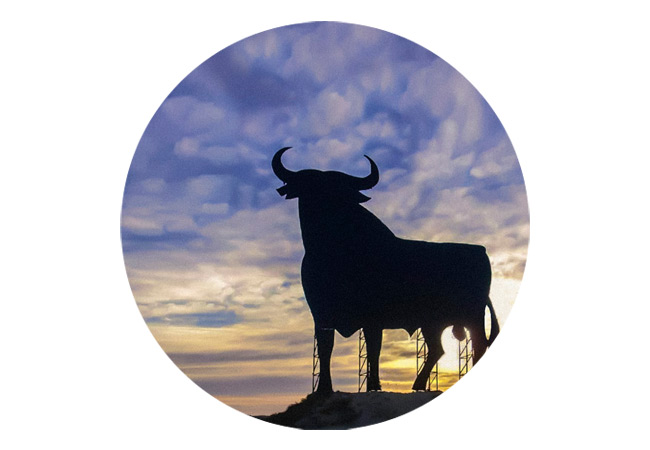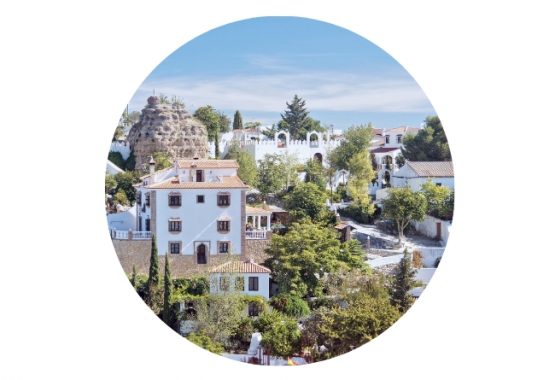If you take a road trip around the 505,990 square kilometres of Spain, it is common to see the image of a huge black bull standing at the top of a hill or near a road in different places. This feature is known nationally as “The Osborne Bull.”
For 60 years, the Osborne Bull has been keeping watch over some of our roads. In the beginning, this figure was a billboard which only measured about 4 metres high. Nowadays -those that remain – reach 14 metres weighing up to 4,000 kilos.

Over the decades, the Osborne Bull has become integrated into the roadside landscape. Despite the controversies that have arisen around it, the Spanish have adapted it as a decorative part of other items. For example car stickers, on t-shirts, caps, key rings, at sporting events (appearing at least in the stands) and including being superimposed on the Spanish flag as a shield.
How was this symbol born?
It all started when the Osborne company, one of the oldest brandy exporting bodegas in the world and the second largest in Spain. They decided to create a logo that would represent one of its most recognised brands of spirits, called “Veterano”.
This is how the Osborne Bull, also called the the “Spanish Bull”, was created by the hand of the painter and artist, Manuel Prieto. He was the Artistic Director of the Azor advertising agency, which was hired to launch this advertising campaign.
The first of these unique bulls was put into place in 1957. In the town of Cabanillas de la Sierra, right at KM 55 on the motorway from Madrid to Burgos. Three years later (1960), there were already 500 throughout the peninsula, originally made of wood, until its structure was changed to metal to resist bad weather.

Currently, only 91 bulls remain, distributed irregularly throughout Spain. Most are around Marco de Jerez, especially in the Cadiz and Seville provinces in Andalusia.
Arguments about the Osborne Bull
The first threat to the bull was in 1962, when Jose Antonio Osborne, the Communications Director of the bodegas, received a call from the General Directorate of Highways in 1962, to remove the figures from the roads. It was that the company took advantage of the restructuring from wood to meta, to also increase its original size.
Until 1988, the Osborne Bull kept the name of “Veterano” brandy on its back; since in that year the General Highways Act prohibited advertising along roads. The company decided to remove it to circumvent the legislation and maintain the black figure of the bull. In 1994, a new publication of the General Highway Regulations attacked the imposing figure once again. But the Town Council and Autonomous Communities’ Association came up with the “Save the Bull” campaign that advocated for it to be turned into an asset of cultural interest.
It was not until 1997, when the Spanish Supreme Court declared that the Osborne figure went way beyond the commercial. Exceeding its advertising sense and integrating itself into the landscape,” so as to be considered a very graphic identifier of Spain.”






